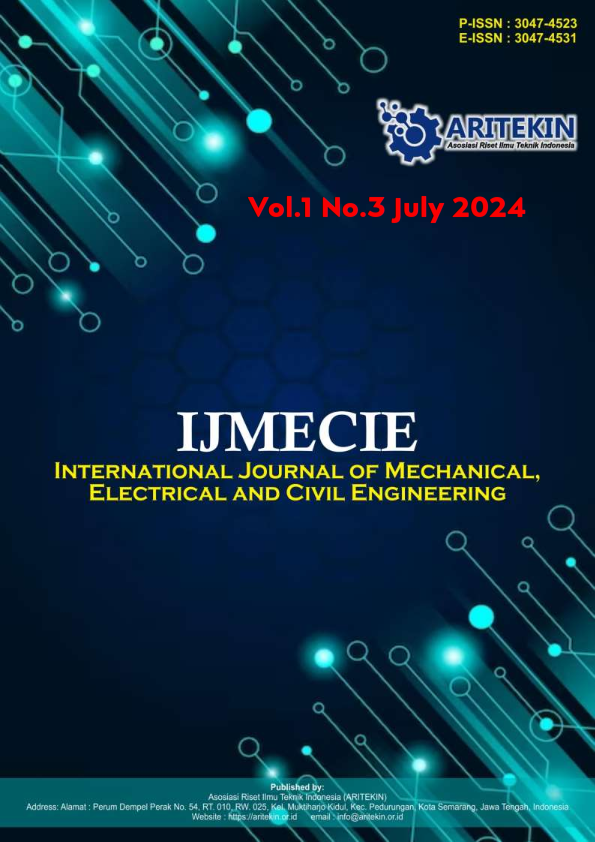Sediment Volume Measuring Tool Using DYP-L04 Type Ultrasonic Sensor Based on Arduino Mega 2560 R3
DOI:
https://doi.org/10.61132/ijmecie.v1i3.51Keywords:
River sediment, Ultrasonic Sensors, ArduinoAbstract
Many rivers in Indonesia had very poor water clarity due to a mixture of dirt and mud in the water. Polluted rivers were often found in areas near settlements, where household waste that flowing into rivers made the water look dirty and turbid. Pollutants dissolved in water will bind to small particles and settle at the bottom of the river, due to sedimentation. This research designed a device to detect sediment volume in the rivers. This device used an ultrasonic sensor type DYP-L04 and a rotary encoder for calculating volume, with Arduino Mega 2560 R3 as a processor. There is a PG45 motor that was used to set the motor speed to be constant. This ultrasonic sensor works based on the Arduino programming algorithm that has been designed, so that the device can measure sediment volume optimally. The results of this research showed that the device could determine the volume of sediment with the average error score less than 10 %.
References
Ginting, S., & Hatmoko, W. (2010). Penentuan laju sedimen pada rencana waduk Jatibarang. Jurnal Sumber Daya Air, 6(1), 33–46.
Prasetyowati, S. A. D. (2021). Hybrid FLC-LMS Algorithm for Predicting Sediment Volume in the River. International Journal of Intelligent Engineering and Systems, 14(2), 395–409. https://doi.org/10.22266/ijies2021.0430.36
Sansury, H. (2016). Tampilan Pengukuran Deteksi Objek dan Jarak Sonar Ultrasonik menggunakan Sensor HC-SR04 pada Arduino ATMEGA 2560. 49–57.
Satriadi, A. (2012). Studi Batimetri dan Jenis Sedimen Dasar Laut dI Perairan Marina, Semarang, Jawa Tengah. Buletin Oseanografi Marina, 1(5), 53–62.
Syefriana, C., & Yohandri. (2020). Pembuatan Alat Ukur Kedalaman Air Menggunakan depth meters. Pillar of Physics, 13(April), 1–8.
Tempongbuka, H., Kendek Allo, E., & U A Sompie, S. R. (2015). Rancang Bangun Sistem Keamanan Rumah Menggunakan Sensor PIR (Passive Infrared) Dan SMS Sebagai Notifikasi. Journal Teknik Elektro Dan Komputer, 4(6), 10–15.
Wicaksana, M. A., & Nuha, H. H. (2022). PREDICTION, MONITORING, AND EARLY WARNING SYSTEM OF WATER LEVELS IN FLOOD PROGRAM AREAS IN BANJARMASIN USING IoT AND LINEAR REGRESSION. Jurnal Socius, 11(2), 31. https://doi.org/10.20527/js.v11i2.14576.
Downloads
Published
How to Cite
Issue
Section
License
Copyright (c) 2024 International Journal of Mechanical, Electrical and Civil Engineering

This work is licensed under a Creative Commons Attribution-ShareAlike 4.0 International License.





